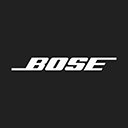Back to article
3344
Product will not turn on
If your product appears to be receiving power but won't power on as expected:
Check for and install any available product updates.
Regardless of the issue you are experiencing with your product, try updating it. Visit btu.Bose.com and follow the instructions to ensure your product has the latest features and enhancements.
Check if your product powers on while connected to a power outlet.
If your product power on when connected to a power outlet but does not power on when disconnected from an outlet and using only battery power, see Product does not power on with battery power.
Avoid holding the Power button while powering on or off your product.
To turn on or off your product, quickly press and release the Power button. Holding the Power button, even just briefly, checks the battery charge level, which wil not power on or off your product.
Check that the USB charger meets the power requirement of your product.
On the USB charger, there will be text that indicates the amp (A) or milliamp (mA) rating of the charger. This rating varies among chargers – including those supplied with different models of Bose products. The closer the amp rating of the charger is to the maximum amp rating of the product, the more quickly the product will recharge. If the amp rating of the charger is too low, the product may recharge slowly or not at all. Refer to the specifications indicated on the product or within it's owner's guide on for details.
Some products require minimum of 1 amp of current in order to recharge. Many USB ports on a computers can only provide a maximum of 0.5 amps of current. Be sure to use a safety-agency-approved power supply that meets local regulatory requirements (e.g. UL, CSA, VDE, CCC).
Some products require minimum of 1 amp of current in order to recharge. Many USB ports on a computers can only provide a maximum of 0.5 amps of current. Be sure to use a safety-agency-approved power supply that meets local regulatory requirements (e.g. UL, CSA, VDE, CCC).
Try a different USB cable.
Try connecting your product with a different USB cable to determine if there is an issue with the first cable.
Try a different charger.
Charge times can vary based on the charger. Chargers with a higher current rating generally charge products faster than those with a lower rating. Chargers typically list a current rating on the label in amps (A) or milliamps (mA). A current rating of 1 A / 1000 mA or higher is recommended.
Check if a tone is heard from you product when power is connected.
Disconnect the power connection from your product for a few seconds, then reconnect it. Within a few seconds of connecting power, a tone should play from your product. If a tone is heard but your product won't power on, the issue might be with the connections or controls; if a tone is not heard, the product might not be receiving power or producing sound.
Your product may need service.
If the steps provided do not resolve your issue, your product may need service. Follow the link below for more information on how to service your product. Depending on your product and region, you will be provided a contact number or the ability to setup service online.
Click here to start service
Click here to start service
Was this article helpful?
Thank you for your feedback!

